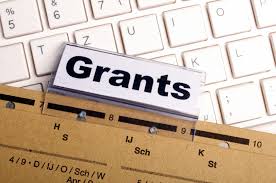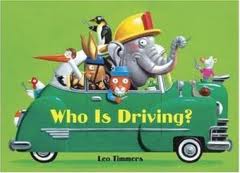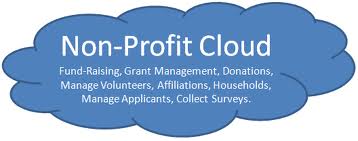 Happy Friday morning, DonorDreams blog readers! I owe you an apology because I missed my mark yesterday and didn’t publish a post. I had good intentions, but my day started fast and snowballed unexpectedly from that point onward. Needless to say, I didn’t even have time to reach into my bag of guest bloggers and share something from them with you. So, I’m going to rectify my Thursday mistake with a Friday morning bonus.
Happy Friday morning, DonorDreams blog readers! I owe you an apology because I missed my mark yesterday and didn’t publish a post. I had good intentions, but my day started fast and snowballed unexpectedly from that point onward. Needless to say, I didn’t even have time to reach into my bag of guest bloggers and share something from them with you. So, I’m going to rectify my Thursday mistake with a Friday morning bonus.
A few weeks ago, a dear old friend of mine — Karen Dove — reach out via LinkedIn to catch me up on where in the world she is.
I first met Karen when she was working as a grant writer for Boys & Girls Clubs of Rockford, Illinois. Our paths crossed again when she was the executive director of the Boys & Girls Club of Wisconsin Rapids, and I was assigned to help her agency plan and implement its first annual campaign pledge drive.
Karen finally got smart and fled the Midwest for the warmer weather of Florida where she consults with Boys & Girls Clubs on things like grant writing and social media.
This morning I am sharing a guest blog post from Karen (with her permission, of course) on the subject of grant writing and letters of inquiry.
Enjoy!!!
How Not To Get A Grant — Letters Of Inquiry
By Karen Dove
Originally published on May 12, 2014
Re-posted with permission from KD Consulting Blog
 I had an interesting chat today with a new client who told me their last grant writer didn’t have any luck using a costly search engine tool for finding new foundations. After a year, they ended the contract on the search engine and now he is no longer with the organization. The moral of this story? Tools don’t make the worker…the worker must really know how to get the most from their tools.
I had an interesting chat today with a new client who told me their last grant writer didn’t have any luck using a costly search engine tool for finding new foundations. After a year, they ended the contract on the search engine and now he is no longer with the organization. The moral of this story? Tools don’t make the worker…the worker must really know how to get the most from their tools.
At this organization, the grant writer would identify a group of foundations that funded youth services and send them each a letter asking for funding. There were no responses. Why? Because a simple letter sent out in shotgun approach does not yield funding. Chances are you know of an organization that has utilized this approach to funding, whether through grants or letters sent to donors. Just send a letter and you get less than 3% return in most cases!
So if you don’t use research to just identify foundations and send them letters, then what must you do to be successful?
My first step is identifying the foundations closest to my geographic proximity.
Grant writing should occur in concentric circles, starting with those closest to you, then further away….county….state…. region….nation. Most novice grant writers are ready to write to the Gates or Oprah Winfrey Foundation right off. Slow your roll…. and start close to home, where funders know you and have a real vested interest in your success. Over time, you may get to Bill and Oprah, but that’s not the place to start.
My second step is most often to make a simple telephone call (or less desirable…an email) to the foundation to help clarify what they fund and what their process is to apply for funding.
Some have their own set of forms, and will likely offer to send you a copy so you can apply. Others have specific grant cycles, and might direct you to their website for more information. Still others do not accept grant proposals at all, but only take advice of their family or board members, in disbursing the foundation’s grant funds (these usually are identified as not accepting unsolicited proposals).
If you want to call, but you can’t find a telephone number for a foundation, chances are they don’t want to be found. Just strike them off your list and move to the next prospect. Grant writing is a science and an art. The research is the science of a successful proposal.

 I was having breakfast this week with a friend and fellow consultant and we were discussing resource development efforts, including events and grants. By now I’m sure you are well aware, I’m not a huge fan of organizations hosting multiple events. Events are expensive, labor intensive and don’t usually generate a lot of income.
I was having breakfast this week with a friend and fellow consultant and we were discussing resource development efforts, including events and grants. By now I’m sure you are well aware, I’m not a huge fan of organizations hosting multiple events. Events are expensive, labor intensive and don’t usually generate a lot of income. Grants, which are often 30% to 50% of an agency’s budget, more if they receive United Way funding, are one way. Yet, they too come with a cost. Most agencies get somewhere between 50% to 80% of the grants they submit. That means that the time spent on writing the 20% to 50% of the grants that don’t get funded is time lost. For the grants that are secured, there are reports to be written, dollars to be tracked, objectives to reach and programming to introduce. All of which is as it should be, and none of which is without cost.
Grants, which are often 30% to 50% of an agency’s budget, more if they receive United Way funding, are one way. Yet, they too come with a cost. Most agencies get somewhere between 50% to 80% of the grants they submit. That means that the time spent on writing the 20% to 50% of the grants that don’t get funded is time lost. For the grants that are secured, there are reports to be written, dollars to be tracked, objectives to reach and programming to introduce. All of which is as it should be, and none of which is without cost.
 This morning I am asking for your help with a small project I am working on. A few weeks ago I agreed to help one of my favorite non-profit organizations with a staff transition. Not only did their development director move on to greener pastures at the end of the summer, but their executive director also recently resigned. So, the board asked me to step into the void and help their management team with a variety of year-end miscellaneous projects (e.g. year-end holiday mailing, 2013 budget construction, resource development plan, etc).
This morning I am asking for your help with a small project I am working on. A few weeks ago I agreed to help one of my favorite non-profit organizations with a staff transition. Not only did their development director move on to greener pastures at the end of the summer, but their executive director also recently resigned. So, the board asked me to step into the void and help their management team with a variety of year-end miscellaneous projects (e.g. year-end holiday mailing, 2013 budget construction, resource development plan, etc). This question was inspired by a string of two or three grants in a row that this organization had just written. As a businessman, he asked this question because he is accustom to looking at everything through a “return on investment” (ROI) lens. In hindsight, this is what he saw:
This question was inspired by a string of two or three grants in a row that this organization had just written. As a businessman, he asked this question because he is accustom to looking at everything through a “return on investment” (ROI) lens. In hindsight, this is what he saw: Seriously, your feedback this morning will directly help another organization in its pursuit of developing fundraising best practices. Your participation will take all of a minute or two this morning. Please weigh-in. Your collective wisdom is massive and will bring tremendous value to this organization’s discussion. You can consider the few minutes that you invest in responding to this request as your “good turn” this holiday season. Please pay it forward!
Seriously, your feedback this morning will directly help another organization in its pursuit of developing fundraising best practices. Your participation will take all of a minute or two this morning. Please weigh-in. Your collective wisdom is massive and will bring tremendous value to this organization’s discussion. You can consider the few minutes that you invest in responding to this request as your “good turn” this holiday season. Please pay it forward!







